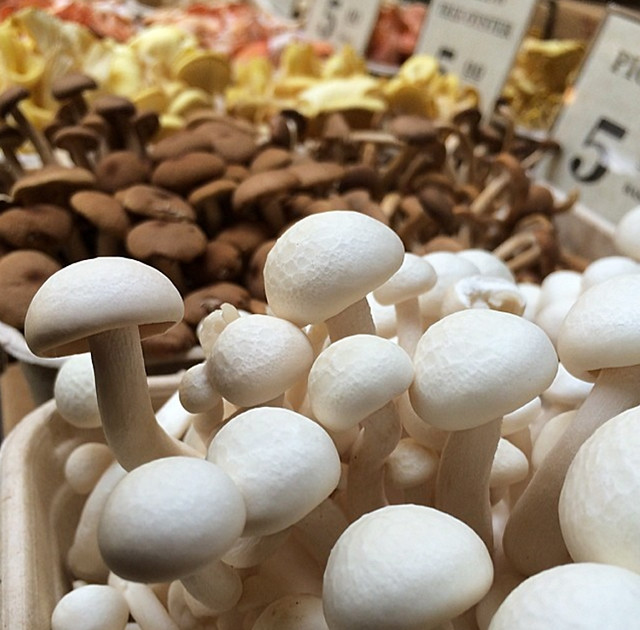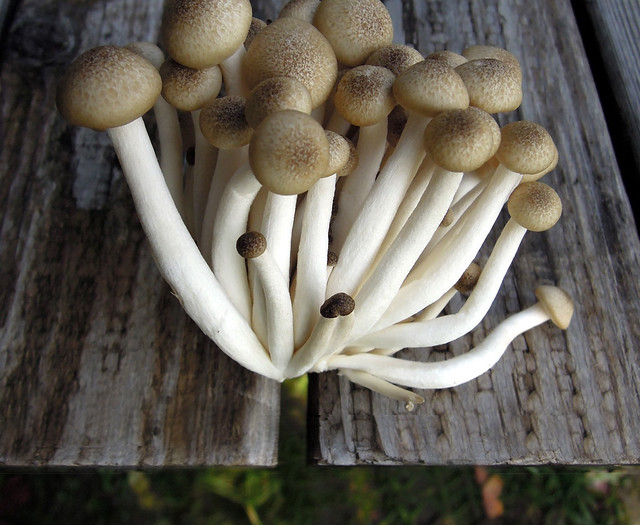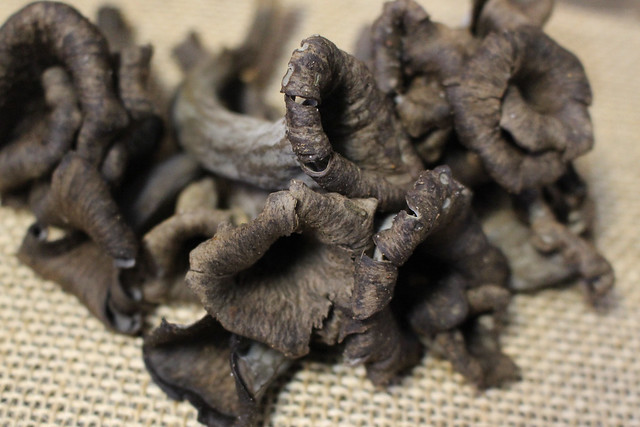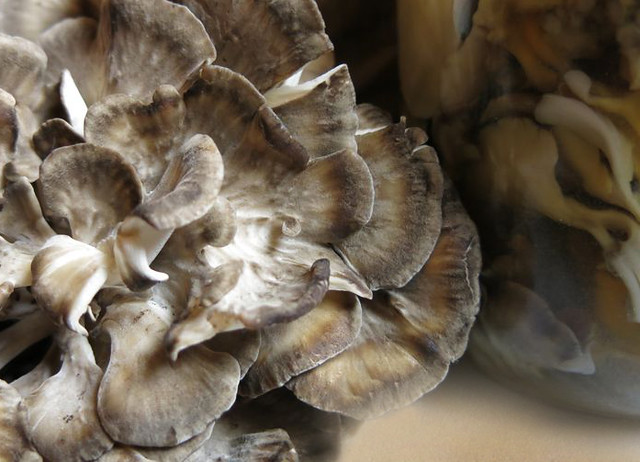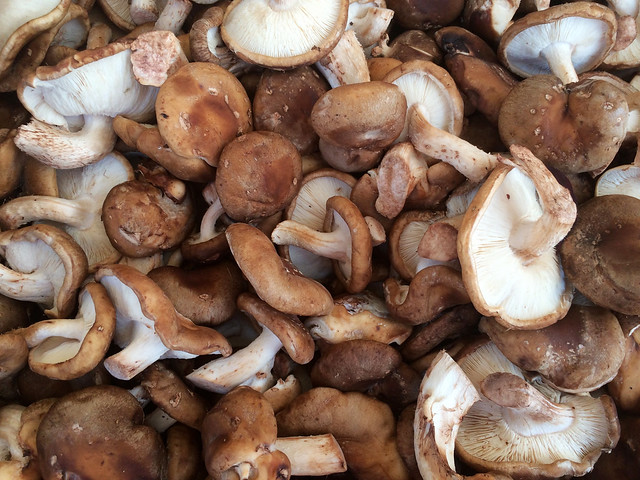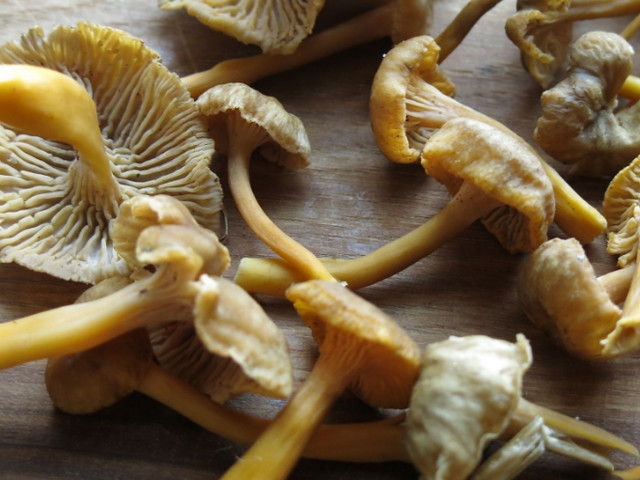Photo provided by Far West Fungi
Each variety of mushroom has its own unique flavor and personality. Many people believe that they don’t like mushrooms when in fact, they have only tried one variety! There are nearly 200 edible varieties of mushrooms and they all taste different.
About eight varieties are commonly cultivated here in California. We work with two local and organic mushroom farms, Far West Fungi and Hokto, which grow many varieties of delicious mushrooms. Below are a few of our most popular offerings, peppered with a few unique varieties that we currently offer when you customize your box.
Brown Beech Mushrooms
These mushrooms are small and thin with white stems and brown caps and typically come in a cluster. Uncooked, Beech Mushrooms have a strong, bitter flavor, but when cooked, these mushrooms will have a smooth, firm, slightly crunchy texture and a mild nutty flavor. Before cooking, trim the base off of the mushroom cluster.These mushrooms are great in stir-fries, soups, stews and sauces. Try our Sweet Potato Bowl with Herb Tahini Sauce to see how well these mushrooms add yummy flavor to a healthy rice bowl recipe.
Black Trumpet Chanterelles
Often appearing more like a frail flower, these mushrooms have a waxy charcoal-gray exterior and a deep brown, near black flesh. The cap blends fluidly into the stem, which is also edible and equal in texture and flavor. These mushrooms have a soft yet chewy texture and a rich, buttery, woodsy flavor with a sweet aroma.Black Trumpets are delicious on pizzas and Foccacia bread. The dried version can also be crushed lightly and added to the the dough of savory breads. Soups, stews and slow cooked meats are all appropriate dishes for featuring the Black Trumpet. Whenever it’s salty and savory, the trumpet will fit in well. For a delicious recipe, we like the Triple Black Trumpet Polenta from the Forager Chef.
Maitake
Also known as Hen-of-the-Woods, these mushrooms are dark brown and come in a cluster with almost leaf-looking caps. They are known to be a bit fruity, earthy and spicy in flavor and absorb companion flavors readily when cooked. Once you have clean Maitake mushroom caps, there's no limit to how you can cook them! They can be stir-fried, baked, sautéed, or even made into a tea.One of the most popular ways to cook them is to simply fry them in oil or butter until crisp. Maitake can replace button mushrooms in any recipe for a more flavorful result. For a simple dish, we recommend this recipe for Seared Mushrooms with Garlic and Thyme from Bon Appétit. Or try our recipe for Cauliflower Polenta with Sautéed Mushrooms, which uses a combination of mushrooms for a complex and lovely earthy flavor.
Quick Tip: Many people also freeze them before cooking, so don't hesitate to do this if you want to save some for later.
Shiitake
These mushrooms have wide, brown caps and white stems. They have an earthy, umami (brothy or meaty) flavor and add depth to a variety of dishes, such as stir-fries, risottos, gravies and pastas.Carefully brush any dirt off of the mushroom and completely remove the stems, which can be too fibrous to eat (save them to flavor soups and stocks). If you are looking for a few recipe suggestions, try our Mushroom Risotto or Chard and Shiitake Fried Rice for a simple week night meal.
Yellowfoot Chanterelle
This mushroom is a delicate and petite, vase-shaped mushroom. Its colors are burnt orange to saffron yellow throughout the entire mushroom, though its coloring fades as it matures. Yellowfoot chanterelle flavors and aromas are delicate and faintly fruity. It is thin-skinned with a soft and moist flesh.Yellowfoot chanterelles are complimented by Mediterranean herbs and spices including sage, rosemary, tarragon and thyme. Sauté with bacon, eggs, chicken, steak and potatoes. For a delicious and simple vegetarian recipe, try this one for Yellowfoot Chanterelle Mushroom Risotto from The Taste SF blog.
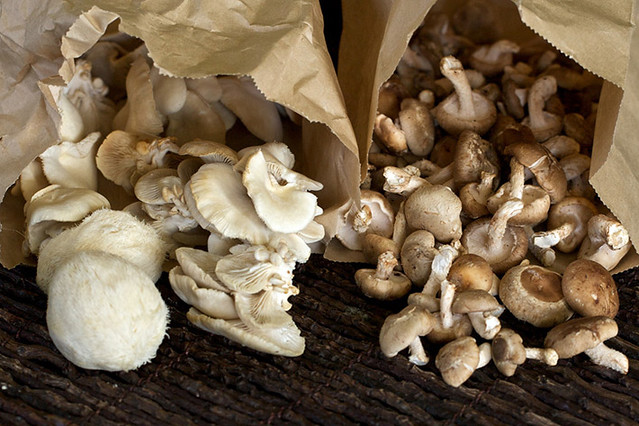
Storing
It is best to store your mushrooms in a paper bag on a shelf (not in the produce drawer) in your fridge and to use them up within a week. When stored in a paper bag your mushrooms may eventually dry out (after two weeks, or so) but they generally won’t get slimy and moldy.Cleaning
Stop. Turn off the faucet! Mushrooms are like sponges, and will become water-logged if submerged. So instead of taking the plunge, let’s look at the mushrooms first. Are they even dirty? Can you see dirt on them? Are they dirty just at the base of the stalk? If so, take a dry/damp cloth and brush off the dirt. You can also use a dry mushroom brush or a clean, soft dish scrubbing brush. Cultivated mushrooms are grown indoors in a highly controlled environment. The “dirt” that might be on them was sterilized before the mushrooms were grown on it. This is the cleanest dirt you will find. Get the big chunks off but you don’t need to worry about making them squeaky clean. If they only seem to be dirty at the base of the stem just trim that part off.Let us know your favorite way to enjoy mushrooms, we are always looking for yummy recipe suggestions.
